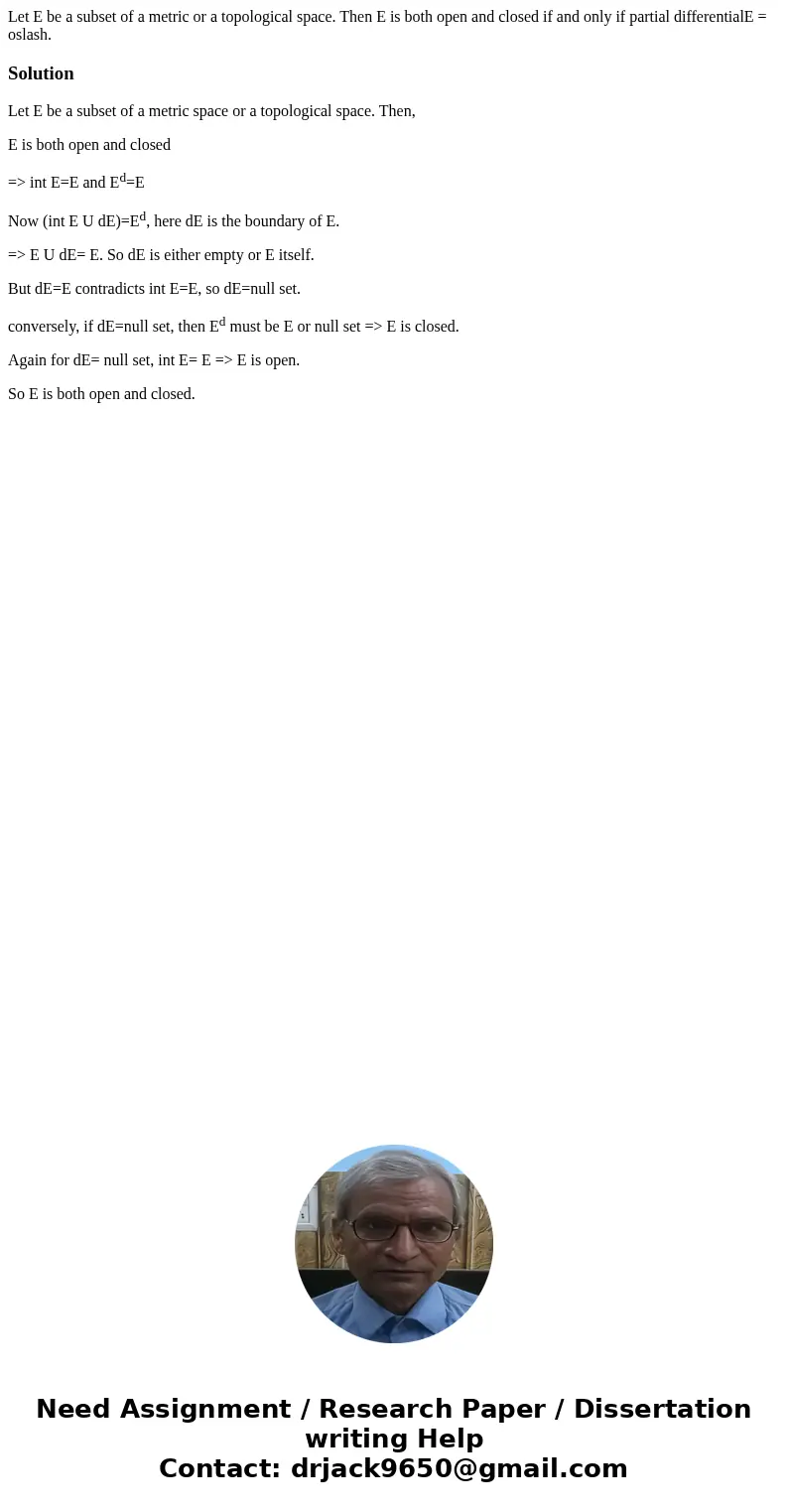Let E be a subset of a metric or a topological space Then E
Let E be a subset of a metric or a topological space. Then E is both open and closed if and only if partial differentialE = oslash.
Solution
Let E be a subset of a metric space or a topological space. Then,
E is both open and closed
=> int E=E and Ed=E
Now (int E U dE)=Ed, here dE is the boundary of E.
=> E U dE= E. So dE is either empty or E itself.
But dE=E contradicts int E=E, so dE=null set.
conversely, if dE=null set, then Ed must be E or null set => E is closed.
Again for dE= null set, int E= E => E is open.
So E is both open and closed.

 Homework Sourse
Homework Sourse